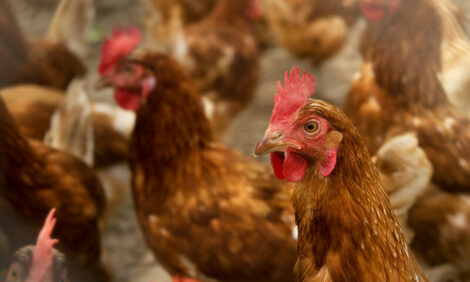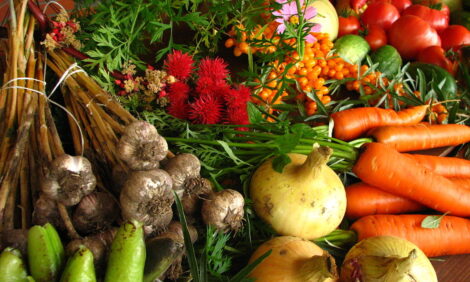



Disease Management Takes Centre Stage at USAHA
US - Diseases with a substantial economic impact were the focus of the 2007 joint scientific session of the US Animal Health Association and the American Association of Veterinary Laboratory Diagnosticians.The session featured presentations on porcine reproductive and respiratory syndrome, Salmonella infections in poultry, viral hemorrhagic septicemia in fish, scrapie, bovine viral diarrhea, equine infectious anemia, and Johne's disease.
"This year, we wanted to look at how the organizations can positively impact economically significant diseases for food animal producers," said Jim Leafstedt, a pork producer from Alcester, SD, and the 2007-2008 USAHA president. "USAHA and AAVLD have long been involved in many aspects of disease prevention, control, and eradication, across multiple species."
Leafstedt co-chaired the program with Dr. Grant Maxie, AAVLD president. The four key areas addressed during the session were an overview of the science in dealing with the noted diseases; development of solutions to mitigate or eliminate diseases; what tools may be absent that limit progress; and what role the USAHA and AAVLD can fill in the development of programs for prevention, control, and eradication of the diseases.
Specific discussions
The Committee on Animal Emergency Management called for a comprehensive effort by government and industry to create a funding system that will provide the resources for state animal health agencies to reach the amounts needed to protect livestock from disease outbreaks and other hazards.
The Committee on Animal Health Information Systems discussed development of national surveillance systems.
A number of USAHA committees also made recommendations including:
- The Committee on Feed Safety and the Committee on Food Safety held a joint session to discuss lessons learned from the melamine and cyanuric acid contamination that caused a pet food recall in spring 2007.
- An upcoming bluetongue survey was outlined at the Committee on Bluetongue and Bovine Retroviruses meeting. The survey will be conducted by the Southeastern Cooperative Wildlife Disease Study at the request of the Department of Agriculture's Animal and Plant Health Inspection Service. The objectives are to determine the species of Culicoides midge in Florida and to further develop a surveillance system for bluetongue virus in white-tailed deer in the southeastern United States.
Awards
A number of awards were also presented at the conference. Dr. J. Lee Alley and Linda Ragland were each presented with a Medal of Distinction. Dr. Alley has served as the association's secretary since 1999. He was USAHA president from 1991-1992 and served on various committees. Ragland has served on the association's staff for 33 years, most of that time as office administrator. They will both retire from their positions at the end of the year.
Dr. Francois Elvinger, professor of epidemiology at the Virginia-Maryland Regional College of Veterinary Medicine, was presented with the Animal and Plant Health Inspection Service's Animal Health Award. In 1995, he coordinated a workshop that was the genesis of the NAHRS.
Dr. Bob Hillman, Texas state veterinarian, earned the National Assembly Award for his outstanding contributions to U.S. animal health in the regulatory field. He is chair of the USAHA Committee on Livestock Identification and serves on the Secretary of Agriculture's Advisory Subcommittee for the National Animal Identification System.
Also of note, Dr. Ron DeHaven, AVMA executive vice president, earned a joint president's award from USAHA and AAVLD in honor of his partnership with the two organizations.











